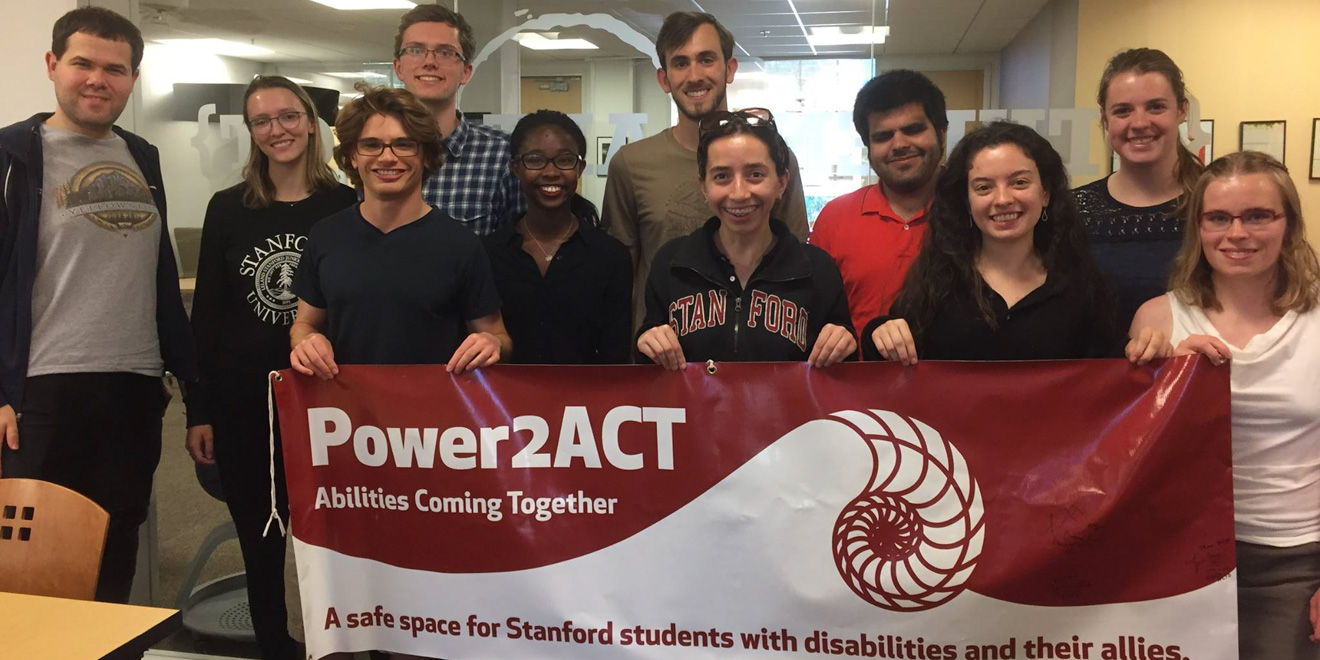Community centers, like seedlings, have always had barriers — seed coats — that they needed to break through in order to grow. Student advocates have always been the driving force behind this process, nicking through the outer structures to give way to these centers. Since the 1980s, Stanford’s disability community has worked to secure a community center of their own. In the 1990s, the Disabled Students coalition was able to acquire a space, but that space was abandoned, leaving them roomless yet again. Fast-forward to the late-2000s: Vivian Wong ‘12 — a huge proponent of disability advocacy on campus — created the Disability Advocacy Chair (formerly known as the Chair of Disabilities and Accessible Education) within Associated Students of Stanford. Wong, in collaboration with Krystal Le ’14 and Aubrie Lee ’14, also established Power2ACT, an organization dedicated to supporting, advocating for and raising awareness of Stanford’s disability community. The ASSU Advocacy Chairs of the last few years, Power2ACT and other groups too — such as Kids with Dreams and Sense Connect — have revivified the idea of a disability community center. As a result of their efforts, Abilities Hub, or A-hub was opened on Nov. 2, 2017.
Yet, Stanford students with disabilities still need a permanent, accessible space with a staff: a community center.
A-Hub is located, primarily, on the second floor of the Student Services Building in the Beam Lounge (and sometimes, in the OAE conference room on the first floor). The entrance to the Beam Lounge is adjacent to an elevator. Inside, there are windowsill seats, crescent-shaped couches that frame a circular coffee table and several high tables and chairs. There are built-in wall shelves bedecked with globes and books and woven baskets. A single rectangular pillar is situated near the windowed walls. Physically, it is a nice space, but it is not the best fit for A-Hub because it is not accessible. It cannot be reconfigured without removing items, such as the curved couches or the pillar. Community members who regularly engage with the space report wheelchair access is limited
Additionally, several groups — Schwaab Learning Center; Bridging Education, Ambition & Meaningful Work (BEAM); and the Office of Accessible Education — all share this space, making scheduling difficult. Brickelle Bro (‘19), one of the co-presidents of Power2ACT and the go-between for “the building manager and the broader Stanford disability community” invests several hours each week coordinating events. Because of increased demand on these spaces by Student Affairs and members of the disability community, groups who meet on a recurring basis, like Power2ACT, have sometimes been unable to reserve a room. These challenges could be surmounted if the A-Hub was more spacious and had a staff.
Still, the A-Hub also needs community center status. In the words of Bryce Tuttle (‘20), one of the ASSU disability advocacy co-chairs and last year’s president of Power2ACT, this is “the most culturally important part [because] center designation shows that Stanford cares.” Even though there are other organizations, such as the OAE and Schwab Learning Center, that support Stanford’s disability community, a disability community center would serve a unique function that no other entity can.
“While these offices work to integrate students with disabilities academically, we hope for the Abilities Hub to empower people with disabilities socially,” says Zina Jawadi ’18, a longtime advocate for A-Hub. This point was underscored by Rachel Wallstrom ‘20, one of the members of the Disability Advocacy Committee, who said, “The most powerful part of exploring my identity in the disability community didn’t come from talking to the OAE and asking for one more accommodation… Conversations I had with other people and engaging with the discipline of disability studies … really help[ed] me understand my role in the community… Seeing how that was a similar thought among many of my peers, I realized that having a space where we could engage with that was very important and could be … very powerful for a lot of people.”
Just having a temporary space has increased awareness of disability on Stanford campus and brought together the disability community and its allies. The positive impacts of a permanent disability community center cannot be overlooked. “If we are able to obtain permanent space … I foresee the A-Hub embodying the student voice, developing into a key component of disability at Stanford, collaborating with other campus centers, voicing the needs of students with disability to the general Stanford community, housing student-related organizations, offering resources specific to the disability community, motivating allies to get involved with our work and growing into a beacon of progress on disability locally, nationally and internationally,” said Jawadi.
Stanford can and ought to be actively working towards creating and nurturing an environment where its disability community can blossom beyond its academic endeavors. In order to achieve that, however, the University needs to make room for A-Hub to break out of its temporary cover and provide its disability community with a permanent community center status, a completely accessible and welcoming space, resources such as a specialized library and a full-time administrator alongside financial support. Because of the work of student advocates, I have faith that that will happen.
A special thanks to Brickelle Bro, Zina Jawadi, Bryce Tuttle and Rachel Wallstrom for talking with me about their ongoing advocacy.
Contact Chasity Hale at cah70352 ‘at’ Stanford.edu.
